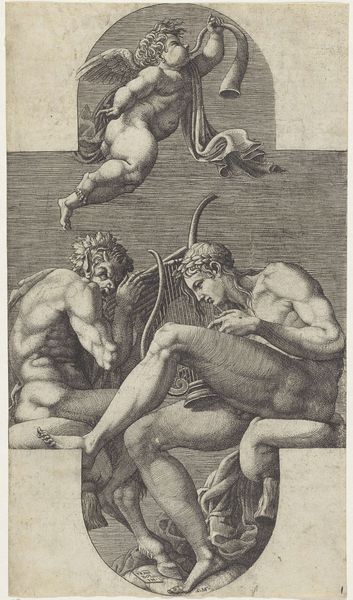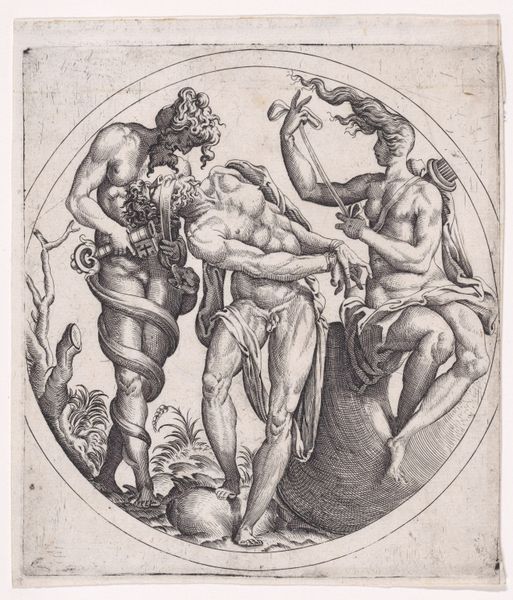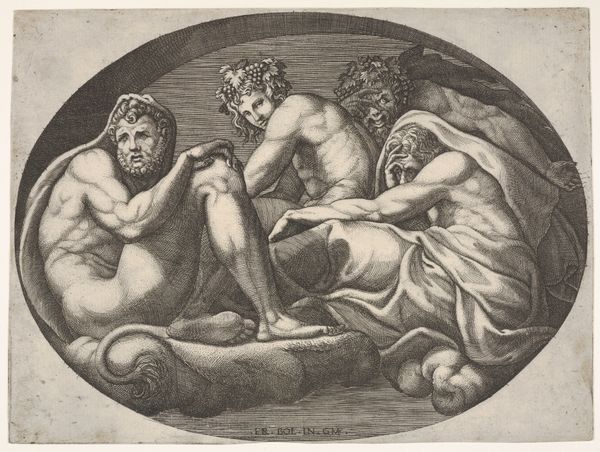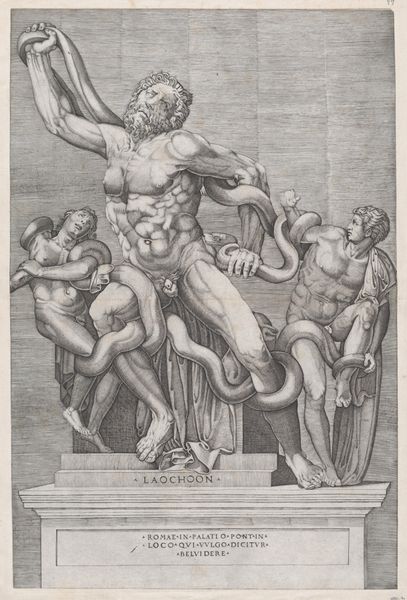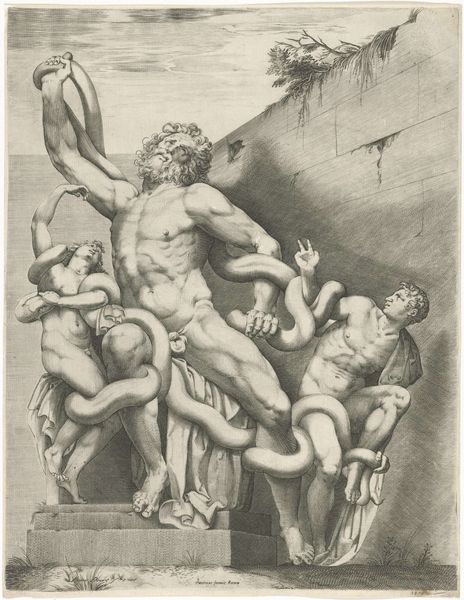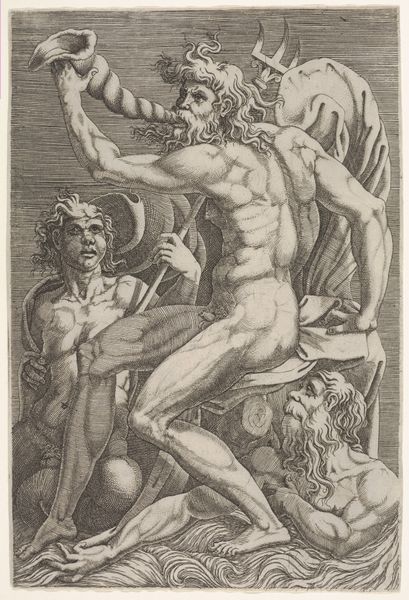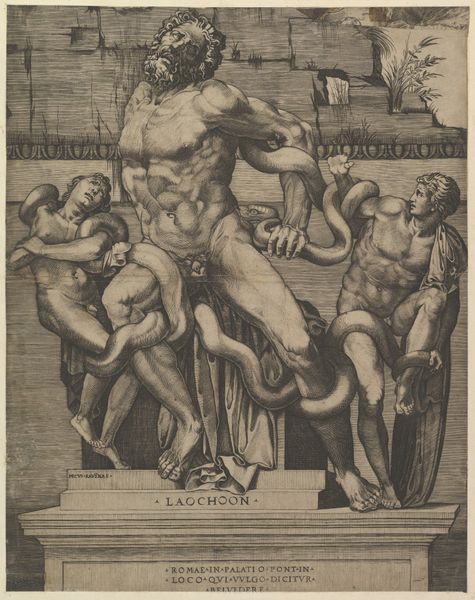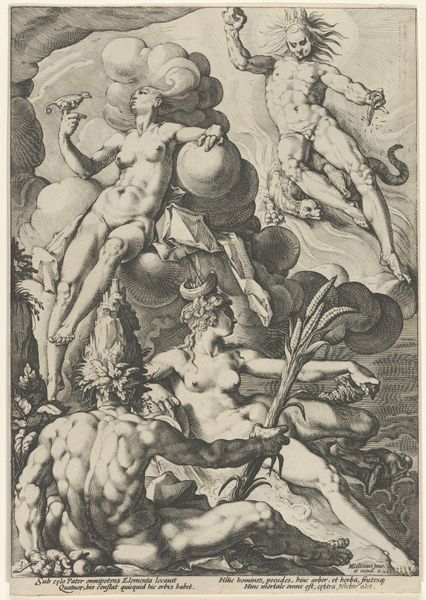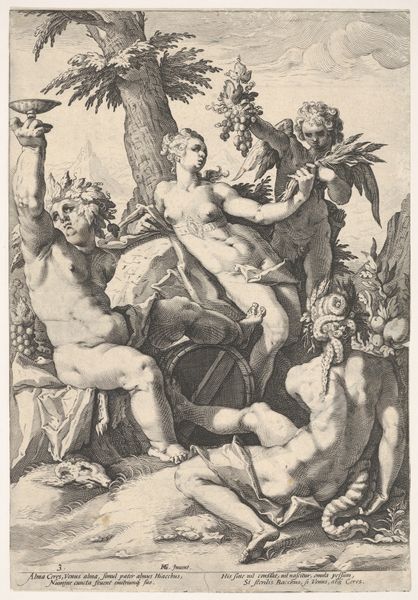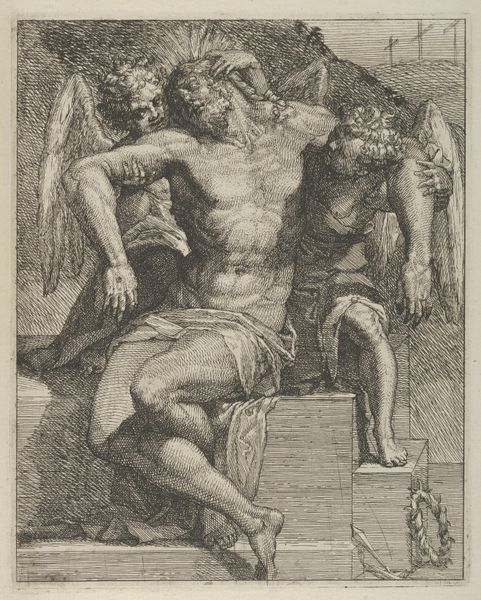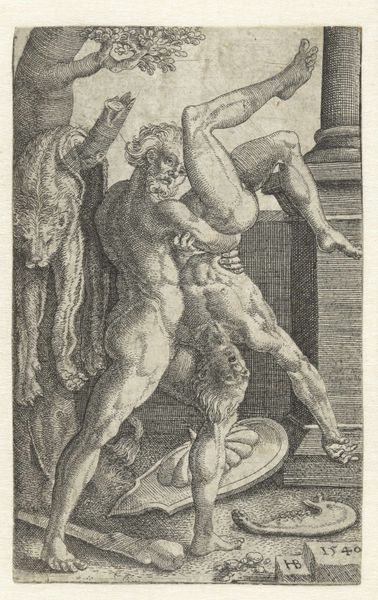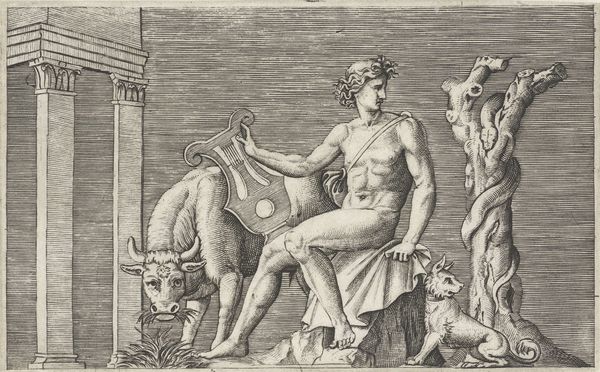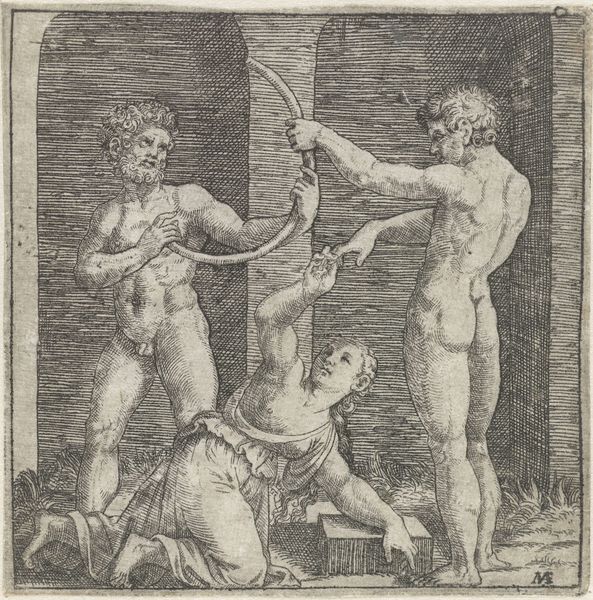
Apollo, Pan, and a putto blowing a horn, from a series of eight compositions after Francesco Primaticcio's designs for the ceiling of the Ulysses Gallery (destroyed 1738-39) at Fontainebleau 1560s
0:00
0:00
drawing, print, engraving
#
drawing
#
allegory
# print
#
mannerism
#
figuration
#
nude
#
engraving
Dimensions: sheet: 11 3/4 x 6 1/2 in. (29.8 x 16.5 cm)
Copyright: Public Domain
Editor: So, this engraving from the 1560s by Giorgio Ghisi is after a design for the Ulysses Gallery, featuring Apollo, Pan, and a putto. It's interesting how this print captures the scene, almost like a fragment of a grander story. What's your interpretation of this work, especially considering its historical context? Curator: This engraving offers a fascinating glimpse into the world of 16th-century artistic patronage and the role of art in shaping power dynamics. Primaticcio’s designs for Fontainebleau were meant to impress, showcasing the king's sophistication and cultural power through mythological narratives. Consider the figures: Apollo, god of music and reason, alongside Pan, the rustic god of nature, and the cherubic putto. This juxtaposition speaks volumes about the desires of the court: to balance intellect with raw power, to project an image of cultivated control over the natural world. Editor: That makes sense. The figures are very idealized, but their arrangement feels...deliberate. Like they’re staged for an audience. Curator: Exactly. The Ulysses Gallery, sadly destroyed, served as a site for courtly display and political negotiation. How do you think the destruction of the original gallery affects our understanding of this print now? Editor: It's a reminder of the fragility of art and power. All we have left are these kinds of fragments. Makes me wonder about the stories that have been lost to time and how those stories might challenge current understandings of the past. Curator: Precisely! This print, then, becomes more than just a decorative piece. It transforms into a historical document, a witness to lost grandeur. Analyzing how these images circulated and were interpreted is key to understanding the cultural aspirations of the period. Editor: This has been incredibly insightful! Thinking about it as a piece of political communication shifts my perception of it entirely. Thanks so much for sharing your expertise! Curator: My pleasure! Examining art through the lens of history always reveals new perspectives.
Comments
No comments
Be the first to comment and join the conversation on the ultimate creative platform.
